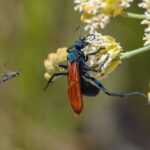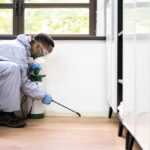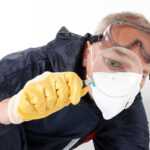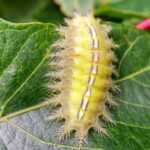Rat Control Tips to Keep Your Home Pest-Free Today
Discover simple rat control tips to protect your home, prevent infestations, and keep rodents away with safe, effective methods.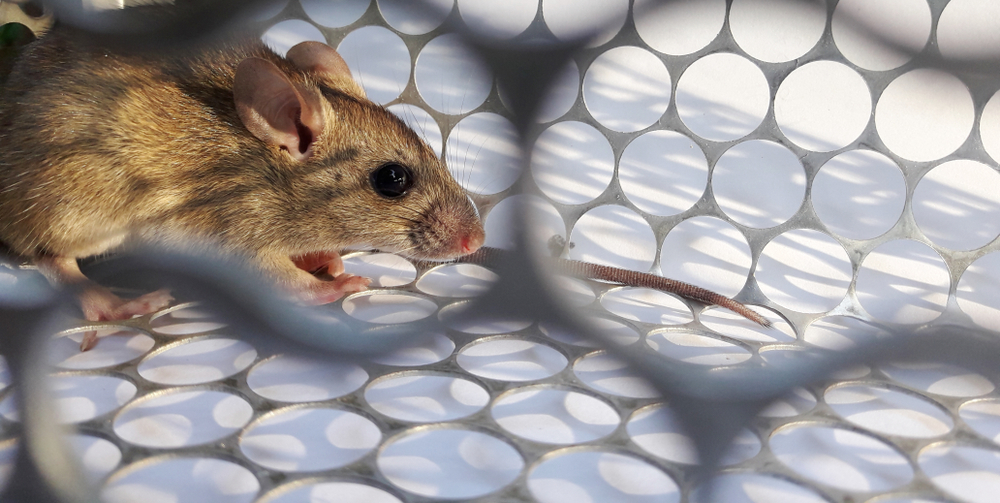
Effective Rat Control: Tips to Identify and Eliminate Rats Fast
Dealing with a rat infestation? This rat control guide offers practical steps to identify and eliminate rats fast. Discover how to spot the signs, select effective rat traps, and keep your home rat-free.
- Early detection of rodent infestations is critical; signs include droppings, gnaw marks, and nesting materials.
- Different rat species, such as Norway rats and roof rats, require specific control strategies based on their nesting habits and diets.
- Preventing rat infestations involves eliminating food and water sources, maintaining cleanliness, and sealing entry points through exclusion methods.
Identifying Rat Infestations
Detecting rodent infestations early is crucial. Spotting one rodent often indicates a larger problem. Frequent property inspections can reveal early signs of rodent activity, allowing for easier control before they multiply.
Signs of a rat problem include:
- gnaw marks
- droppings
- smudges
- nesting materials
Droppings near food sources, in cabinets, or under sinks are clear indicators of active rats and should not be ignored.
Rats often leave behind subtle clues despite their elusive nature. Their hiding skills make immediate detection difficult, but vigilance and attention to these signs can help address the problem before it escalates.
Common Rat Species
Identifying common rat species is crucial for effective rodent control. The two primary culprits in homes are Norway rats and Roof rats. Knowing which species you’re dealing with allows for more tailored control methods.
Norway rats are large, up to 16 inches long and weighing around one pound. They have gray undersides and can be reddish, grayish-brown, or black on top. These nocturnal creatures forage for food at night and typically nest underground or in basements.
Roof rats are smaller, weighing between 5 and 10 ounces, with proportionally longer tails. They are agile climbers, often nesting in high places like trees or roofs. Their diet of fruits, grains, seeds, and insects makes them well-suited for urban environments.
Where Rats Nest
Rats build nests meticulously, with preferences varying by species. Roof rats favor elevated areas like attics and eaves, using shredded paper, fabric, leaves, and twigs for their nests.
Norway rats typically build nests close to the ground, near building foundations or in garbage piles, and may create intricate underground burrows for added security.
Both species can cause more damage by chewing holes in walls and floors to create entry points, which not only provide easier nest access but also increase structural damage to your property.
What Attracts Rats?
Rats are opportunistic feeders attracted to easily accessible food sources like pet food, discarded scraps, and unharvested garden produce. Norway rats consume almost anything discarded by humans, including meat, poultry, fish, and vegetation.
Standing water attracts rats by providing a hydration source. They also seek shelter in cluttered areas, particularly piles of debris and cardboard.
Dark, concealed spaces like crawl spaces or attics are ideal nesting locations for rats. Chew marks on food packaging and surfaces also indicate their presence and attraction to your home’s food sources.
Effective Rat Traps
Traps are essential tools for controlling rat populations. Options include snap traps, glue traps, and electric rat traps, which are designed to kill rats efficiently. Snap traps are especially effective when placed near walls where rats frequently travel, with the trigger end almost touching the wall.
Glue traps catch rats using a sticky surface but may be considered inhumane due to potential suffering. Electric rat traps offer a quicker, more humane death through an electric shock.
Effective baits for snap traps include bacon, canned tuna, nuts, and nut butters. Proper placement and baiting can greatly increase trapping success.
Using Rodenticides Safely
Rodenticides can effectively kill rats but must be used cautiously. Place bait stations in areas inaccessible to children, pets, and other non-target animals to prevent accidental poisoning. Store rodenticides securely out of reach.
Consumer rodenticides often come in ready-to-use bait stations with varying safety levels. Always read and follow product label instructions for safe usage.
Check and replenish bait stations every one to two weeks to maintain effectiveness. Anchoring bait stations can prevent removal by non-target animals and children, minimizing risks.
Rat Reproduction and Population Control
Rats reproduce rapidly, making population control essential. Norway rats can reproduce up to seven times a year, with females becoming pregnant just two days after giving birth. In ideal conditions, a pair can produce up to 15,000 descendants in a year, quickly leading to large infestations if not controlled.
Fertility control methods like Evolve™ can significantly reduce rat population growth by impeding reproduction without harming other wildlife or birds. Sustainable population control prevents the rebound effect, where surviving rats quickly repopulate after traditional extermination methods.
Preventing Future Infestations
Prevention is better than cure. Eliminating food and water sources reduces the risk of rodent infestations and the diseases they spread. Keeping homes clean and sealing entry points through exclusion effectively prevents rodent access to your property.
Trimming vegetation around buildings reduces rodent access routes. Installing door sweeps and fine mesh screens blocks rodent entry while allowing ventilation. Professional pest control services often include follow-up visits to monitor and prevent future rodent and other pest issues.
Diseases Spread by Rats
Rats carry various diseases, posing significant health risks. Leptospirosis, a bacterial infection transmitted by rats, can result in serious health complications. Hantavirus, another serious viral disease, can be contracted through exposure to infected rats or their feces (and urine).
Direct contact with contaminated rodent droppings, urine, or saliva presents a significant risk for disease transmission. Rodent bites can also lead to infections and the transmission of various diseases.
Preventing rodent infestations is crucial to safeguard your health and that of your family.
Professional Pest Control Services
Professional pest control services offer tailored plans based on specific rodent problems and property needs. Experts use advanced tools and techniques that are more effective than general DIY methods. Many companies provide comprehensive warranties, offering peace of mind.
Timely and effective rat control is essential to protect your home and health. From identifying infestations to understanding common rat species and their nesting habits, this guide equips you with the knowledge to handle rat problems effectively.
Effective traps and safe use of rodenticides, combined with sustainable population control methods, are key to managing rat populations. Preventing future infestations through cleanliness, sealing entry points using exclusion, and professional follow-up services is crucial.
If you encounter persistent issues, professional pest control services like Responsible Pest & Scorpion Control offer advanced solutions and peace of mind. Don’t hesitate to seek their expertise to ensure a rat-free home.
Frequently Asked Questions
What time of year is worst for rats?
Fall and winter are the worst times for rats, as they seek warm nesting spots and face a scarcity of outdoor food sources due to colder temperatures. This increases the likelihood of infestations in urban areas.
What do rats hate most?
Rats are most repelled by ammonia due to its strong odor, as well as mothballs and peppermint, which are commonly used as deterrents. Additionally, they dislike the presence of domesticated pets and environments lacking in nutrition and comfort.
What is the best way to get rid of rats?
The most effective way to eliminate rats involves using rat traps indoors and rat-proofing buildings outdoors. Ensuring a clean environment and removing potential shelters will also significantly deter their presence.
What are the signs of a rodent infestation?
The presence of gnaw marks, droppings, smudges, and nesting materials near food sources or hidden areas indicates a rodent infestation. It is crucial to address these signs promptly to prevent further issues.
How can I identify Norway rats and Roof rats?
You can identify Norway rats by their larger size, gray underside, and reddish or grayish-brown to black top. In contrast, Roof rats are smaller, have longer tails, and are agile climbers that typically nest in elevated areas. Understanding these distinct characteristics will aid in proper identification.
